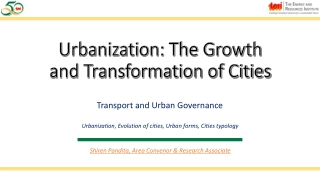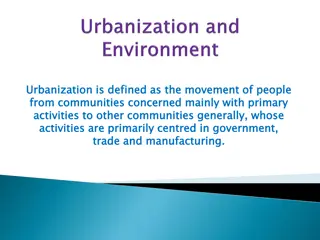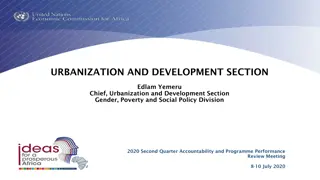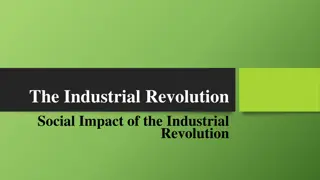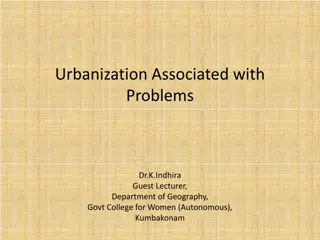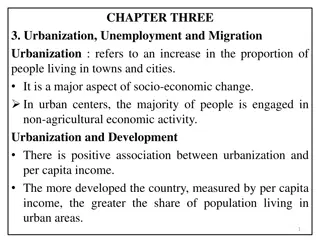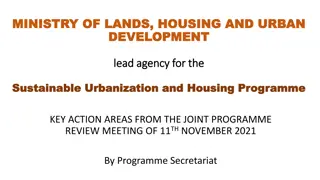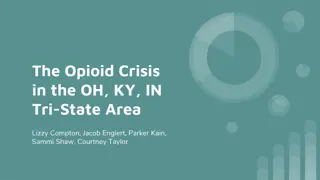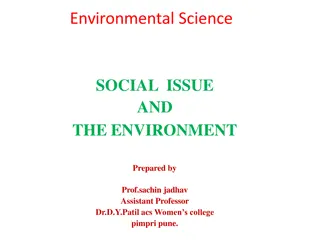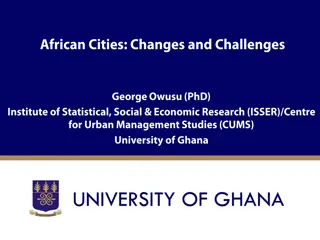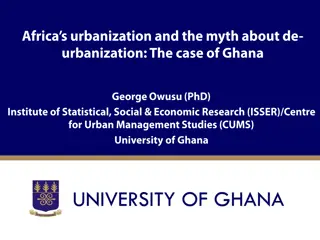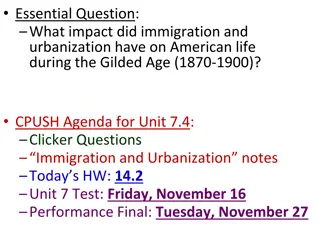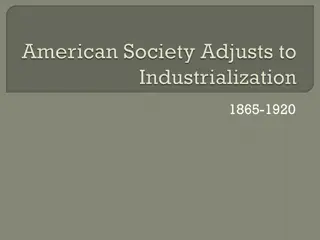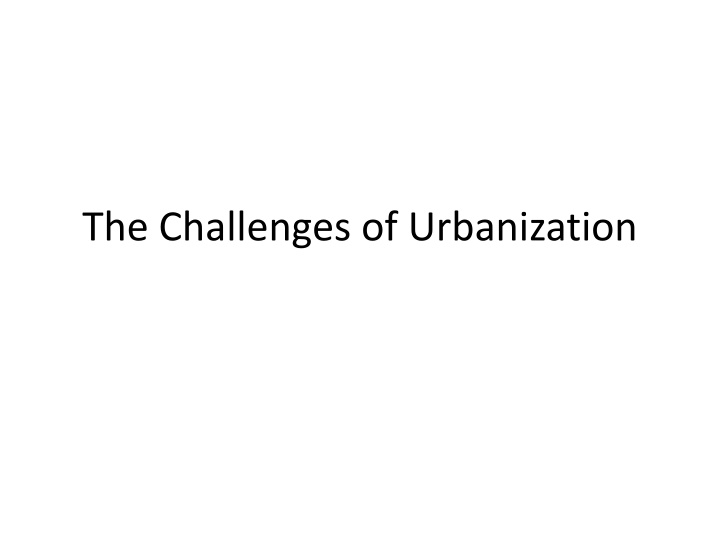
Challenges Faced in Urbanization During Historical Shifts
The urbanization challenges during significant historical events such as post-Civil War Reconstruction, Manifest Destiny, industrialization, and immigration waves are outlined. The rapid growth of cities forced people to address housing, sanitation, transportation, job, and water issues, reflecting the impact of urbanization on society at the time.
Download Presentation

Please find below an Image/Link to download the presentation.
The content on the website is provided AS IS for your information and personal use only. It may not be sold, licensed, or shared on other websites without obtaining consent from the author. If you encounter any issues during the download, it is possible that the publisher has removed the file from their server.
You are allowed to download the files provided on this website for personal or commercial use, subject to the condition that they are used lawfully. All files are the property of their respective owners.
The content on the website is provided AS IS for your information and personal use only. It may not be sold, licensed, or shared on other websites without obtaining consent from the author.
E N D
Presentation Transcript
Remember all the changes after the Civil War Reconstruction in the South Manifest Destiny (westward expansion) Mexican-American War gained land from Mexico Native Americans removed from the land following bloody battles and moved to reservations Rapid rise of industrialization caused growth of cities New inventions (light bulb, telephone, Bessemer process) Transcontinental railroad Robber barons (Carnegie, Rockefeller)
Immigration Large number of immigrants Through Ellis Island in New York Through Angel Island in San Francisco 20 million Europeans between 1870 and 1920 200,000 Chinese between 1870 and 1920 Reasons included Poverty in home lands Opportunities Freedom
Growth of Urban Population Inventions and technological advance allowed cities to grow Factories Skyscrapers Immigration Most moved to the cities, expanding population From 10 million to 54 million between 1870 and 1920
This is the topic of this section The Challenges of Urbanization BIG IDEA The rapid growth of cities forced people to deal with problems of housing, sanitation, transportation, jobs, water, and sanitation.
Why did immigrants settle in cities? Cities were the cheapest places to live. It was closest to where they arrived in the United States Especially in New York (Ellis Island) Factories offered many jobs to unskilled laborers
How many immigrants? By 1890, twice as many Irish in New York as in Dublin, Ireland By 1910, immigrant families made up more than half of population in 18 major American cities
The Americanization Movement Definition: Social movement by government and citizen groups to teach immigrants skills needed for citizenship English literacy History Government Cooking Etiquette
Immigrant response Many did not want to abandon their traditions Ethnic communities developed Enabled them to speak own language and customs But quickly got overcrowded
Migration from Rural areas Many moved from rural areas because Technology reduced number of laborers needed Escape racial violence in the South Escape political oppression To seek better jobs
Urban Problems Housing lack of available housing led to many families living in tenements Poor people needed to get around = cities developed mass transit such as subways and street cars Water Lack of piping in cities led to little or no running water Diseases Too many people in a small space, lack of sanitation, medical care Sanitation = Garbage on streets, outhouses Crime Fires
Reform Movements Social gospel movement Preached salvation through service to the poor Settlement houses Community centers to provide assistance to the poor Run mainly by middle-class, educated women Taught courses Provided medical care Jane Adams most famous of the social gospel movement founded Hull House in Chicago
Jacob Riis An immigrant from Denmark A police reporter, often worked in slums Also a photographer Documented the lives of the poor in tenements Most famous work: How the Other Half Lives

